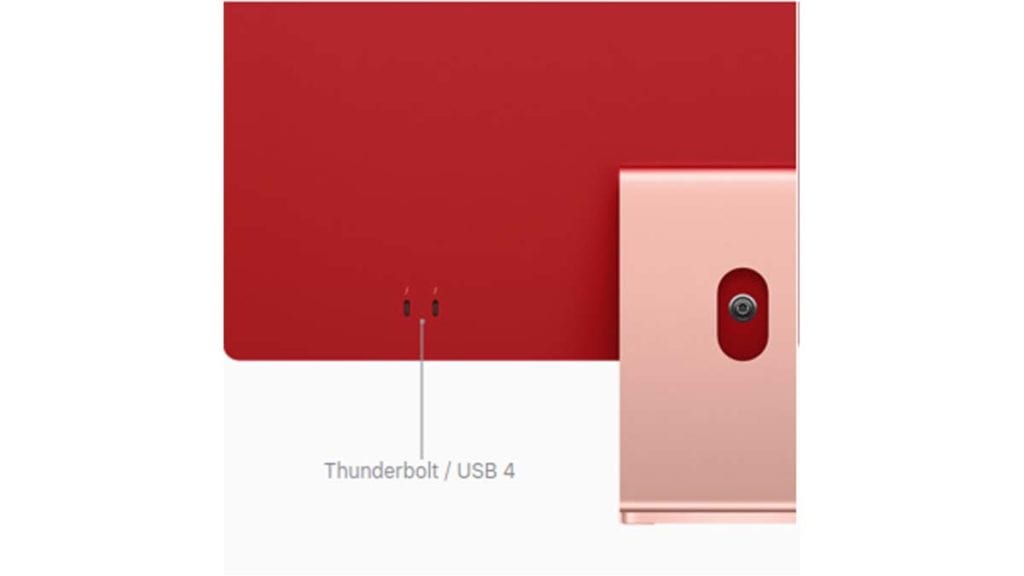Having so many different Macs to choose from can be a challenge, especially if you’re just taking the first step into Apple’s universe. We have the MacBook Air, MacBook Pro, iMac, Mac Mini, and they all come in various versions.
Things can get confusing pretty quickly. However, if you’re looking for a desktop setup, you have two options worth considering: the M1 Mac Mini and the new 24-inch M1 iMac.
Both devices are powered by Apple’s M1 processor, so at their core, they offer a similar experience. What truly sets them apart is the overall performance, design, connectivity, and affordability, of course.
In this article, we’re going to compare the two systems to learn which one is the better option. Spoiler alert- the M1 Mac Mini wins this duel. Continue reading to learn why we consider that the M1 Mac Mini is better than M1 iMac for most people.
If you prefer to watch a video on why M1 Mac Mini is better than M1 iMac instead, then take a look at our The NEW 2021 M1 iMac – Watch This Before You Buy!
The Design
The Mac Mini and the iMac are designed as desktops, but they’re quite different from each other. The Mac Mini is a small aluminum box that weighs just 2.6 pounds. It looks like a small form-factor desktop unit and it can be easily placed in a tight space. It fits perfectly on the side of a desk or it can be placed right under the monitor.


The reason why the Mac Mini reminds us of a conventional desktop PC is that you need to purchase the monitor, keyboard, mouse, and other peripherals separately. This may sound inconvenient to an Apple veteran, but those who are switching from a Windows system find comfort in the familiarity and they already own all those accessories.
On the other hand, the M1 iMac (2021) has a completely different design. While the M1 Mac Mini looks exactly like its predecessor, the iMac was redesigned. It is much thinner than the previous version, with a display housing that is less than half an inch thick and is overall extremely compact. The previous models were bulky in comparison.


Despite being only 18.1 inches tall and 21.5 inches in width, the iMac comes with a large 24-inch 4.5K Retina display, an integrated speaker, and a mic. The display is a significant improvement when compared to the previous 4K 21.5-inch model.
The iMac supports Dolby Atmos, captures high-quality sound, and it includes a 1080p webcam that takes advantage of the M1’s image processing power. All of this put together results in a fully integrated desktop system.
In addition, the iMac comes with Apple’s Magic Keyboard and Magic Mouse. The iMac is without a doubt a satisfying all-in-one computer system that will appeal to Apple veterans. What you see is what you get and you have everything you need in one package.
That being said, if you aren’t a fan of Apple’s peripherals or you want a certain mechanical keyboard or third-party mouse, the accessories that come with iMac are a waste of money. This is especially true if you’re switching from a Windows or Linux system and you want to continue using your favorite gear.
This is where the M1 Mac Mini shines. For around half the price of the iMac, you get a piece of hardware that you can customize however you want. With the iMac, you’re sacrificing some of that control over the setup’s functionality.
That being said, we can’t automatically declare the Mac Mini a winner just because of the design. After all, if you don’t care about peripherals and customization, you might find the iMac better. It all depends on your personal requirements and preferences in this case. So let’s take a look at performance.
Performance
If you care about performance, and especially about the performance/dollar ratio, you’ll want to take a look at the M1 Mac Mini. Despite lacking all the peripherals, the Mini comes with a powerful 8-core M1 chip, 8 GB of RAM, and a 256 GB SSD.
And this is just the base model. The memory can be increased to 16 GB and storage can go all the way to an impressive 2 TB. But wait, doesn’t the iMac comes with the same hardware?
Mostly yes, but that’s part of the issue. The main difference between the two systems is that the base iMac comes with a 7-core GPU while the Mini has an 8-core GPU. This doesn’t sound like such a big deal, but it can make a difference if you’re a gamer or if you performing demanding tasks like rendering.
If you want the same 8-core GPU in the iMac, you’ll need to pay extra. In addition, the iMac’s storage can only go up to 1 TB.
So, why is the Mac Mini better when the iMac uses the same chip and you can upgrade to an 8-core GPU? This is where that performance/dollar ratio comes in. The M1 Mac Mini is significantly cheaper. You get the same amount of power while saving a few hundreds of dollars.
If you already have a set of peripherals, or if you indeed to purchase third-party peripherals, the Mac Mini wins simply because it offers the same performance at a much lower price. But wait, there’s more…
Connectivity


When it comes to connectivity options there’s a noticeable difference between the M1 Mac Mini and the iMac. The basic Mac Mini comes with two Thunderbolt ports, two USB-A ports, an Ethernet port, a 3.5mm headphone jack, and an HDMI 2.0 port.
Unfortunately, if we compare the M1 model with the previous Mac Mini model, this is a connectivity downgrade. However, the iMac has even fewer options.


The base iMac edition has two Thunderbolt ports and a 3.5mm headphone jack. That’s it. Most users need more than two ports. To get two USB-A ports on top of that, you will either need to pay for the upgraded edition or invest in a USB-C dock.
Neither device is ideal when it comes to connectivity, but the M1 Mac Mini is better than M1 iMac, especially when considering the price.
Affordability
It all comes down to this. The M1 Mac Mini starts at $699. This price includes the 8-core M1 processor that also has 8 GPU cores. The base iMac starts at $1,299 and comes with 7 GPU cores, lacks an Ethernet port, as well as 2 USB-A ports.
To get the exact same performance out of the iMac you need to purchase the $1,499 version. This is more than double the price just to get the same technical specs.
We can’t deny the fact that at this price you also get a 4.5K Retina display, a keyboard, and a mouse, but are they really worth more than twice the price of the Mac Mini?
That’s for you to decide.
Final Thoughts
We think that for most users, the M1 Mac Mini is better than M1 iMac. If you’re switching from a Windows PC, you already own at least one display, a keyboard, a mouse, speakers, and other devices you might want to use.
It’s hard to justify the iMac’s price in this case. Even if you own one of the older iMacs and you’re looking to upgrade, you already have the Magic Keyboard and Magic Mouse. The Mini brings you the same functionality and performance but for half the price.
If performance and customization are what you’re looking for, go for the Mini. Some of us like to buy different displays while others have favorite keyboard and mouse brands. Some users might not even need a fancy 4.5K display, so the iMac would be an overkill investment.
The Mini is, in essence, your typical PC that lets you customize almost everything while the iMac is an all-in-one package.





